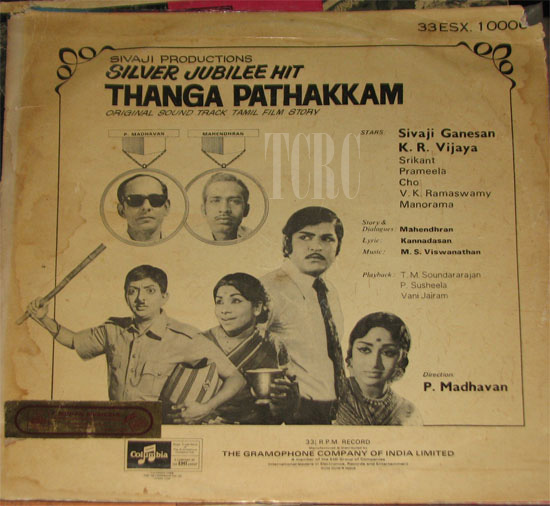By P.V.Gopalakrishnan
Once in my high school vacation, a guy in our friend circle motivated us for a trip to the far away AVM studio to witness a film shoot, on the pretext one of his relatives worked there. Our long bus trip to Puliyur and beyond made a bunch of us cross a lot of fields and Aubergine cultivated lands (you know, Kodambakkam Kathirikkai was very popular in those days), till we reached our dream destination. But our starry eyed expectations were soon blown off by the studio sentry who, forthwith, denied entry to our small group of school kids.
Today, the word ‘Kollywood’, coined after Bollywood, would refer the whole hub encompassing Vadapalani to Kodambakkam to Saligramam, the nerve center of Tamil film industry & TV. It is in this topography, the mighty film studios such as AVM & Vijaya Vahini once clustered & grew with vast facilities for film production. They had innumerable shooting floors, with Vijaya Vahini having as many as thirteen. Of course we had also, by exception, film studios spilled over to other areas of Madras too, such as the mighty Gemini in Mount Road, Venus in Alwarpet, Meenakshi Cinetone turned Neptune turned Satya in Adyar and Newtone, Citadel in Purasawakkam.
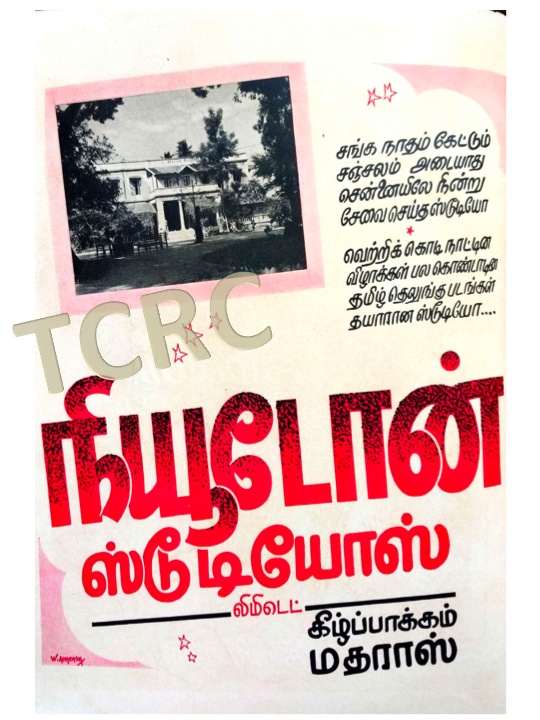
An Ad for Newtone Studios in Kalki Deepavali Malar 1942 PC: From the archives of TCRC
Those days, before the advent of Kodambakkam over bridge in 1965, there was a rickety railway level crossing at busy Kodambakkam, choking with heavy traffic. The gate closed with every suburban service passing. The ever hungry star gazers hanged about this level crossing to catch a glimpse of their favourite stars, lurking inside their car, waiting for the gate to open.
Besides Madras, there were also few well-known studios in other cities; Mr. T.R.Sundaram’s Modern Theatres Studio at Salem, Sreeramulu Naidu’s Pakshiraja Studios, Neptune Studios & Central Studios, all in Coimbatore.
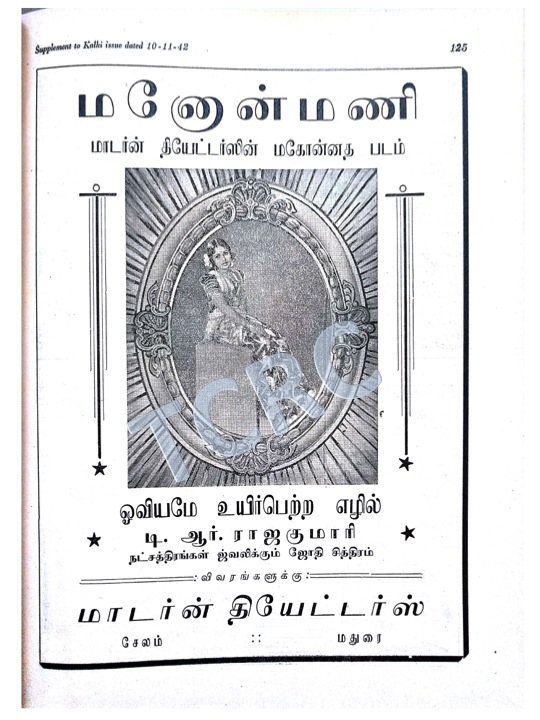
An Ad for brought out by Modern Theatres for the film Manonmani in Kalki Deepavali Malar 1942 PC: From the archives of TCRC
Prior to production of films in Madras State, some films were produced in Calcutta & Pune. M.S. Subbulakshmi starred Savithri (1941), which had as many as eighteen songs penned by Papanasam Sivan, was produced in New Theatres Studio of Calcutta.
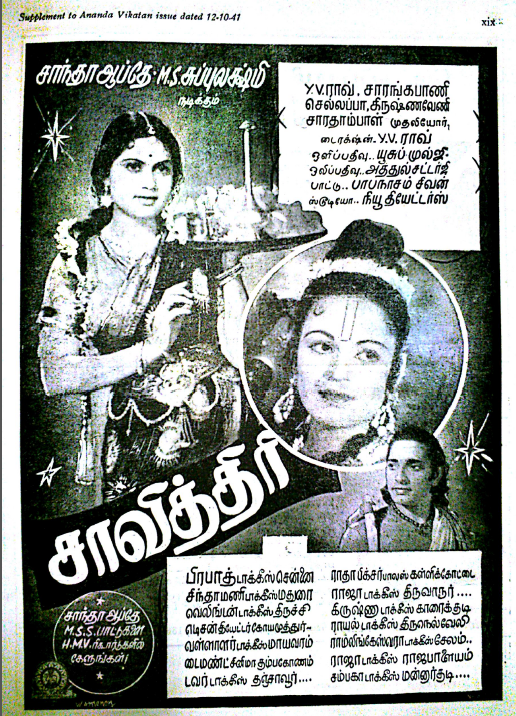
An Ad for the film Savitri in Ananda Vikatan Deepavali Malar 1941 PC: From the archives of TCRC
As per the Film Historian Randor Guy, the Madras Electric Supply Corporation (MESC) had built a powerhouse in Kodambakkam area during the World War II times, but without many takers for the energy. The film studios were enthused to set up shops here. Kodambakkam soon saw several studios coming up such as AVM, Vijaya, Rohini, Bharani, Vikram, Paramount (later called Majestic), Golden, Vasu, and Karpagam.
Much before AVM Productions was launched, Sri Valli (1945), directed by A.V.Meyyappan himself along with A.T.Krishnaswamy, was made by AVM under the banner of Pragathi Studios. This movie catapulted A.V.Meiyappan to fame.
AVM Studios was first located at Karaikudi, before shifting to Kodambakkam. The Karaikudi studio was made of thatched roof structures and stood at Devakottai Rastha. ’Nam Iruvar’, released before Indian Independence & which became a thundering success, was made in Karaikudi based AVM studios. This super hit film extensively portrayed the hopes and aspirations of a nation on the brink of independence. Only after this did AVM move his studio from Karaikudi to Kodambakkam.
AVM Studios, in its grand annals, have had many a landmark event associated with Tamil Film Industry.
National Pictures and AVM Productions jointly produced the debut film of Sivaji Ganesan ‘Parasakthi’, though it did not begin well for Sivaji Ganesan, who was on a princely monthly remuneration of Two Hundred Fifty Rupees for the film. In fact, at one stage, Meiyappan, dissatisfied with Ganesan’s “thin” body frame wanted him replaced. But, ironically, time wanted to prove this very Ganesan as an Institution by himself. So, AVM’s partner in the project, Perumal, insisted that Ganesan be retained. But the initial scenes involved many retakes with Ganesan. Rest was history, with the world acknowledging him as Nadigar Thilakam.
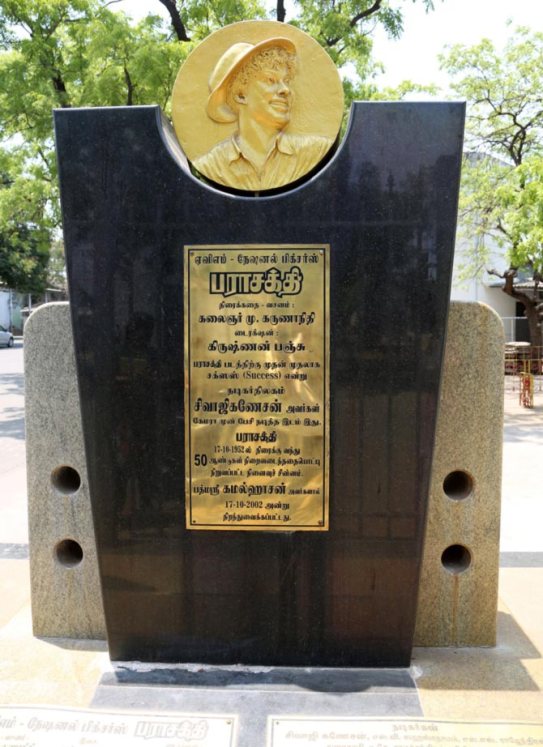
A plaque commemorating the 50th year of Parasakthi at AVM studios at the very spot Sivaji Ganesan said his first dialogue ‘Success’ . PC: http://www.rediff.com
AVM’s “Vazhkai” (1949) was the first film to be shot at the new AVM Studio at Chennai. The film starred T.R. Ramachandran and Vyjayanthimala, which was the latter’s debut movie in Tamil when she was a teenager. When M. V. Raman, who wrote ‘Vazhkai’, spotted Vyjayanthimala performing a Bharata Natyam concert at Gokhale Hall in Madras, he was impressed by her talent & beauty and recommended her to the boss Meiyappan.
V. Venkatraman (SVV) was ‘found’ by A.V.Meyyappa Chettiar as a man in distress at Cubbon Park, Bangalore & gave him the break in “Nanda Kumar” as Music Director. SVV became a major name in music scene & scored soul-stirring music for over two hundred films in various languages. Even MSV & TKR worked for him at some point in time.
C.N.Annadurai is said to have written the three hundred pages of screen play for the film “Oar Iravu” in a single night camping at AVM studios, for a whopping sum (at those times) of Rupees Ten Thousand!
It was only at AVM Studios the living legend S.Janaki gave her audition in 1957 before Music Directors Sudarashanam & Govardhanam.
Vijaya Studios made “Maya Bazaar” (1957) which was critically acclaimed and considered as one of the enduring classics of Indian Cinema. It was touted as a landmark achievement in Indian film’s cinematography, art direction and visual effects with the technology available at the time.

The entrance to Vijaya Vauhini studios. PC : http://www.frontline.in
Gemini Studios, owned by Movie Moghul S.S.Vasan, had a history. The Veteran Film Director K. Subrahmanyam (Father of Denseuse Padma Subramanyam) who made some iconic movies including ‘Thyaga Bhoomi’ (1938) was having a Studio at the same premises since 1937. But owing to a major inferno the property was totally burnt down. In 1941, S.S.Vasan bought out the premises in a distress sale & built his own studio & named it Gemini Studios. It is said that Vasan, who was a fan of horse racing, named the studio after one of his favourite horses. Gemini Studios produced some of the iconic movies such as Nandanar, Mangamma Sabatham, Miss Malini, Chandralekha, Avvaiyar, Vanjikottai Valiban to name a few.

An ad for Gemini Pictures Circuit with its distinct logo (the company that bought over the studio from Subramanyam and renamed it Gemini Studios). Published in Anada Vikatan Deepavali Malar 1939. PC: From the archives of TCRC
(to be continued)


